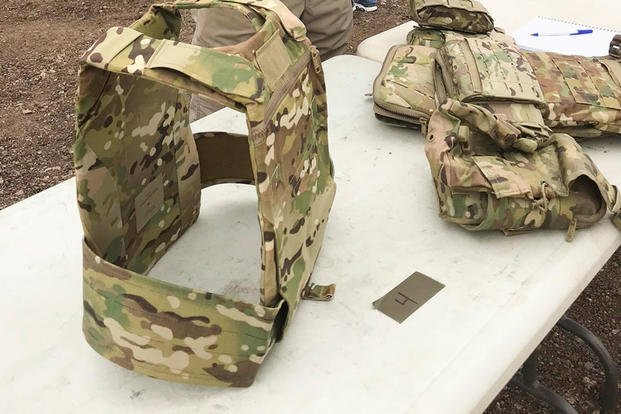U.S. Army equipment officials said today that the service is experimenting with body armor designs that offer less coverage and slightly less protection to reduce the weight soldiers carry in combat.
The Army has started fielding its new Modular Scalable Vest, which weighs approximately 25 pounds, about five pounds lighter than the outdated Improved Outer Tactical Vest.
"[When I went out] to the [Security Force Assistance Brigade] that is wearing the Modular Scalable Vest, the soldiers looked at me and said 'you got it right this time,' " Brig. Gen. Anthony Potts, who commands Program Executive Office Soldier, told a group of reporters at the 2018 Association of the United States Army's Annual Meeting and Exposition. "But that doesn't mean that we are sitting on laurels."
Potts described how body armor experts from the Army, Marine Corps and Special Operations Command did a "body armor sprint" to examine current body armor designs and "just simply tell us what we can do ... to unburden our soldiers."
One idea involves a more streamlined cut "that allowed more space for maneuverability," Potts said.
"We have to make sure we are not putting soldiers at undue risk when we free up space that was formerly covered by body armor," he said, describing how officials then looked at data compiled about the type of hits soldiers have taken in combat.
The results showed that a more streamlined cut would result in a "negligible" risk to soldiers.
"It took another pound off body armor, but even more importantly, it freed up mobility," Potts said.
Army officials have also adjusted the level of back-face deformation -- which is how much of the back face of the armor plate is allowed to move in against the body from a bullet strike.
"We were using an exceptionally conservative methodology," Potts said. "We have used 44 millimeters for decades; we are now moving that to 58 mm."
An Army study showed the expanded back-face deformation results in "no significant increase" in risk to soldiers, Potts said, adding that manufactures now have more freedom to use different materials to produce armor plates.
"Now that formula can be different; you can allow it to absorb more, which means you can actually get a lighter plate," Potts said.
"We are in source selection right now ... we have given them a goal of between 7 and 30 percent lighter armor. ... It looks like we will have a reduction."
-- Matthew Cox can be reached at matthew.cox@military.com.










